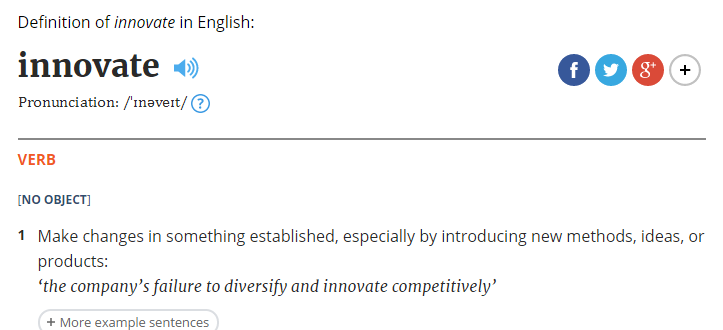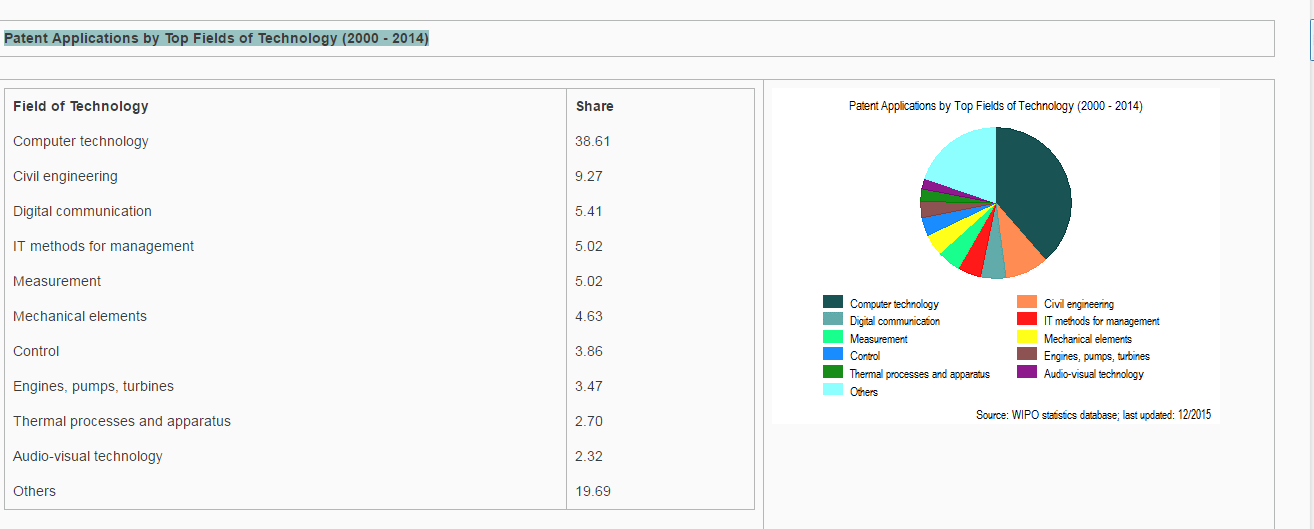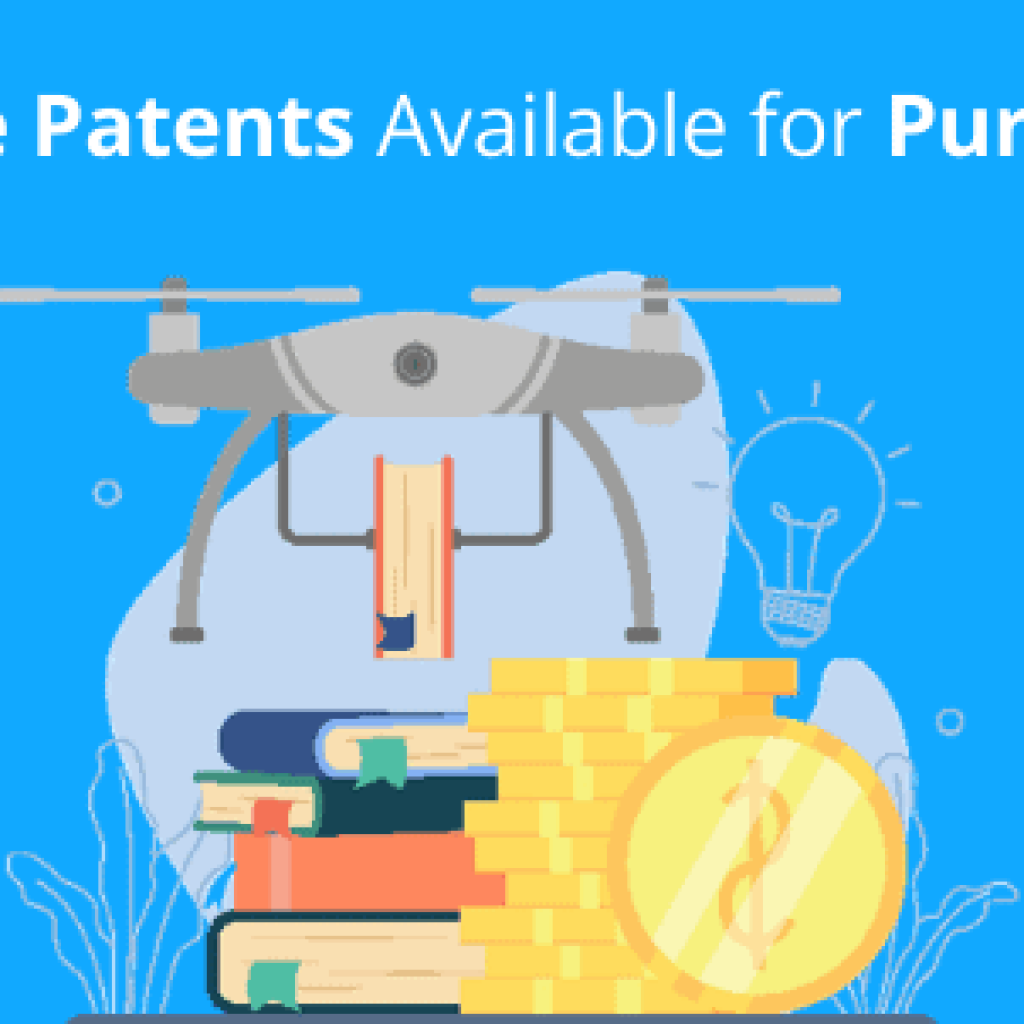Do patents promote innovation or stifle it?
This million dollar question has been a topic of debate for almost a century. Half of us are in favor of the system while the other half openly despises the system. The system too has its set of flaws that totally justifies the stand of those against it.
But does that mean patenting system stifles innovation?
No.
This very statement is wrong at a fundamental level.
How?
Going Literal
I consulted a dictionary to find out what Innovation really means. Here’s the result that showed up.

According to oxford dictionary, the term innovate means to “make changes in something established, especially by introducing new methods, ideas or products.”
That basically means, finding a new way to do something.
Coming back to the argument, a patent is capable of protecting an idea/invention claimed in the application. Anything that is not claimed can be worked on.
There are hundred different ways to do something and a patent is capable of locking a few ways. The other avenues are still open for exploration. Further, Designing around a patent is not the most difficult thing in the world.
Innovation is all about exploring new avenues and patenting doesn’t hinder innovation. It indeed gives a chance to the creative minds to figure out another way to accomplish something rather than going conventional.
Literally, patents do not stifle innovation.
But I do know this little snippet would do nothing to convince you. Hence, we researched a bit and found 4 statistics to prove that a patenting system is good for innovation.
Countries with Strong vs. Weak patent system
A country with strong patenting system grows at a better rate than the one with a weak patenting system. To prove our point, we compared the contribution of IP-Industry in the growth of the US – an IP pro country, and India – country with relatively weak IP system.
The US earned $110 billion from cross-border licensing fees and royalties in 2012. Also, the IP industry generated 27 million jobs in the US, in 2010.
Comparing the revenue earned by the two patent offices, we found that in 2013, the Indian PTO earned $46 million in revenue while the USPTO earned $2719 million.
No doubt, the reason behind these stellar figures is the strong patenting system of the US which attracts world’s best companies in the country.
Growth in an economy
Now that we know the difference that a strong patent system makes, let us consider answering this question- How does a country progress after the introduction of a patenting system?
For instance, consider the example of Qatar and UAE where the patenting system was introduced in the year of 2006.
A look at the chart reveals that Qatar has a much higher GDP when compared to the US. Also, it should be noted that Qatar and UAE are both rich sources of Oil and Petroleum. The oil export business is one main reason behind the high GDP.
But one thing that is worth being noted here is that after the enactment of the patent act in 2006 for the countries- UAE and Qatar, their GDP has grown at a much better rate while the earning from oil remain the same.
Further, a look at the patent filing statistics reveals that the innovation isn’t merely focused on Digital oil field technology but is equally distributed. The enactment of patent law act has promoted innovation in various technologies in Qatar, a proof of which is revealed by the chart below.
The above statistics proves the point that patents doesn’t just protect the rights of innovators but also bolsters the economy of a nation.
Well, that’s another brownie point for the system.
Diversification of Innovation
It has often been said that countries that have a strong patent system have much more diversification in innovation when compared to countries with a weak patent system. With resources aplenty and protection provided to inventors, some countries have better development rate in technology when compared to others.
Consider the instance of Singapore, a country with a mere population of 5.47 million, forecasted to be the potential IP hub of Asia. The strong patent system coupled with an innovation-friendly infrastructure has created such an impact that Singapore has a reserved spot in the “Top 10 most innovative countries in the world” list.
The below chart represents the technologies where a lot of patenting activity has taken place from the past 15 years. A look at the chart reveals that the technologies of the list are very diverse. The same trend is noticeable in other countries with a strong patent system. Be it US, Canada, Germany or the likes, the countries with a strong patent system have a diversified innovation quotient.
Wisdom says that Greater the innovation, better the development of an economy. The strong patenting system ensures diversified innovation which in turn results in a developed economy.
Is patenting system good for the economic growth of a nation?
What do you think?
The seatbelt case
By now, most of us would agree to the part that patents are good. But some of us might also argue that there are cases where the lack of patenting system promoted innovation.
Though we totally acknowledge the fact, it has also been the case that the lack of patenting hindered innovation.
Don’t believe me?
Here’s a case that would prove how the lack of patents stifled innovation in the seatbelt market.
In 1959, Volvo was the first company to come out with a three-point seat belt. The seat belt was the mother of all innovations as it helped save a million lives during an accident.
Instead of patenting this valuable invention, Volvo gave a free license to all the car manufacturers around the world to use it. They gave away this precious invention for free building a great reputation in the market.
The funny part is that since these companies already had a free license on seat belts and no patents to design around, there was no innovation in seat belt market.
It was only after a period of five years, a seat belt patent was filed. In order to not get forgotten, Volvo too filed a patent on its invention in 1986.
After the event, there has been a prolific growth in seatbelt market and hundreds of patents have been filed. But it stands to reason that the growth in the market was not caused due to the absence of a patent but due to the presence of one.
That was just one example. There are many others. But the point here is that sometimes, a system no matter how flawed has its own sets of pros.
It is often said that one person’s music is other person’s noise. A patent would stop hundreds from venturing into a technology due to broad claims. But it is also true that designing around is not the most difficult thing in the world.
Innovation is all about finding new means to accomplish a purpose. The patent system in its truest sense fosters innovation and not stifles it. Though there are flaws in the system, there had been reforms to overcome the flaws.
No system has been perfect till date. It takes its own sweet time to get it right. But if we lose hope and start abusing the system, it won’t do any of us any good.
The system is here to stay and will get better over time. All we can do is wait and watch while things get better over time.
Till then, Happy Patenting!
Authored by: Anjali Chopra, Research Analyst in collaboration with Shelza Gupta, Senior Research Analyst, Concept Hacking












